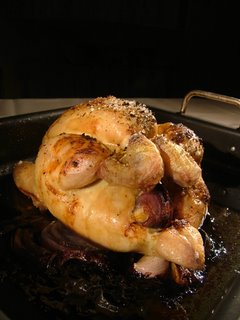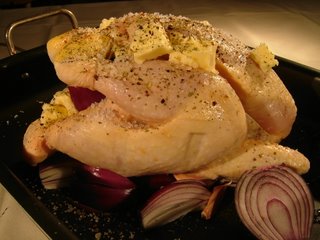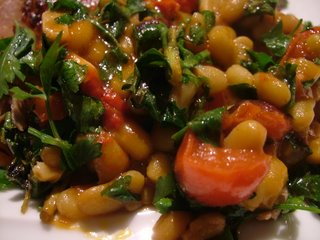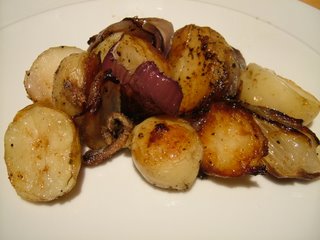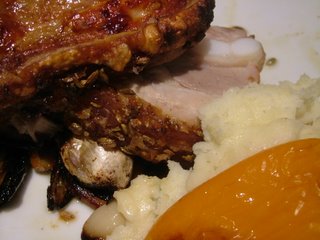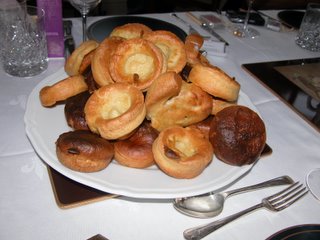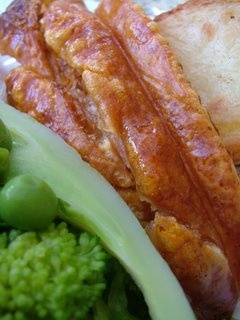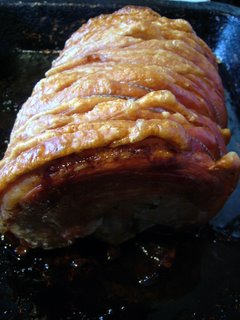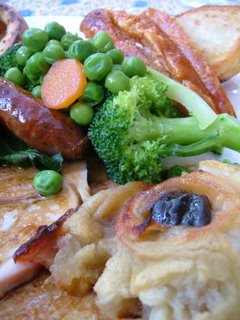Your eyes aren’t deceiving you – this is a chicken with a can of Guinness bunged up its how-do-you-say. With a dry rub, it’s a brilliant, if slightly obscene way to cook chicken. The beer, flavoured with some of the spicy rub, steams the chicken from inside, resulting in a juicy, delicate flesh, while the skin cooks to a crackling, caramelised crispness.
My friend Lorna pointed me at this extraordinarily cheap roasting stand from Amazon when I complained that my beer can often threatens to topple when I make this dish. It’s worth spending a couple of pounds on a stand like this (bend one of the wire loops to fit the can onto the little dish; it’ll keep the chicken nice and sturdy along with the can). If you don’t own a stand, just make sure that the chicken is resting levelly on the can. Don’t be fooled into using the chicken’s legs to balance the beast – they’ll shrink and change shape when they cook.
To roast one rude-looking chicken to perfect succulence you’ll need:
1 plump chicken without giblets
1 can of beer
2 heaped tablespoons ground cinnamon
1 heaped teaspoon mustard powder
1 teaspoon chilli powder (I like powdered chipotles for this, but you can use cayenne pepper)
1 teaspoon allspice
1 tablespoon salt
3 heaped tablespoons soft dark brown sugar
Snip through any strings holding the chicken’s legs neatly together, and spread them out. Mix all the dry ingredients together in a bowl and rub them all over the chicken, then add a tablespoon of the rub to the cavity of the chicken and smear it around a bit with the back of a spoon. Leave for the flavours to penetrate for two hours at room temperature. Meanwhile, open the beer can, pour half of the beer out and drink it. (This is a fun recipe.) Use a metal skewer or a nail and hammer to make a few more holes in the top of the half-full beer can.
Put a tablespoon of the remaining rub in the can with the beer. It will froth and bubble, so add your rub carefully. After the two hours are up, rub any remaining spice mix onto the chicken and push the bird carefully, bottom (that’s the end with the legs) first, onto the upright beer can, as in the picture. Roast the whole apparatus at 180° C (350° F) for 1 hour and 30 minutes, remove the bird carefully from the can without spilling any beer, and rest for ten minutes before serving. (If you are a lucky person with a large and easily controlled barbecue, try cooking the chicken in there over some flavourful wood – it’ll be delicious.)
Don’t be tempted to use the hot beer as a sauce. It’ll taste bitter and revolting, so just pour it down the sink. Let the chicken’s natural juices (there will be plenty, and they’ll come out of the bird as it rests) act as a gravy. This is a great dish with a salad and a pilaf or cous cous. Serve with a couple of nicely chilled cans of whatever beer you used in the cooking.
If you’d like to try a different take on beer can chicken, I’ve come up with a recipe for a slightly Chinese-ified version too – enjoy!

